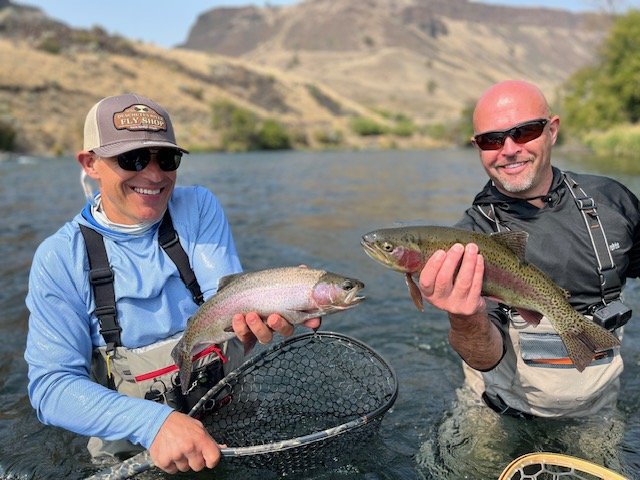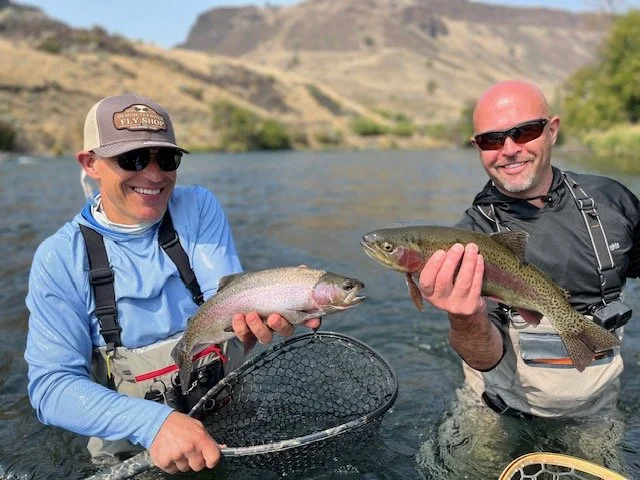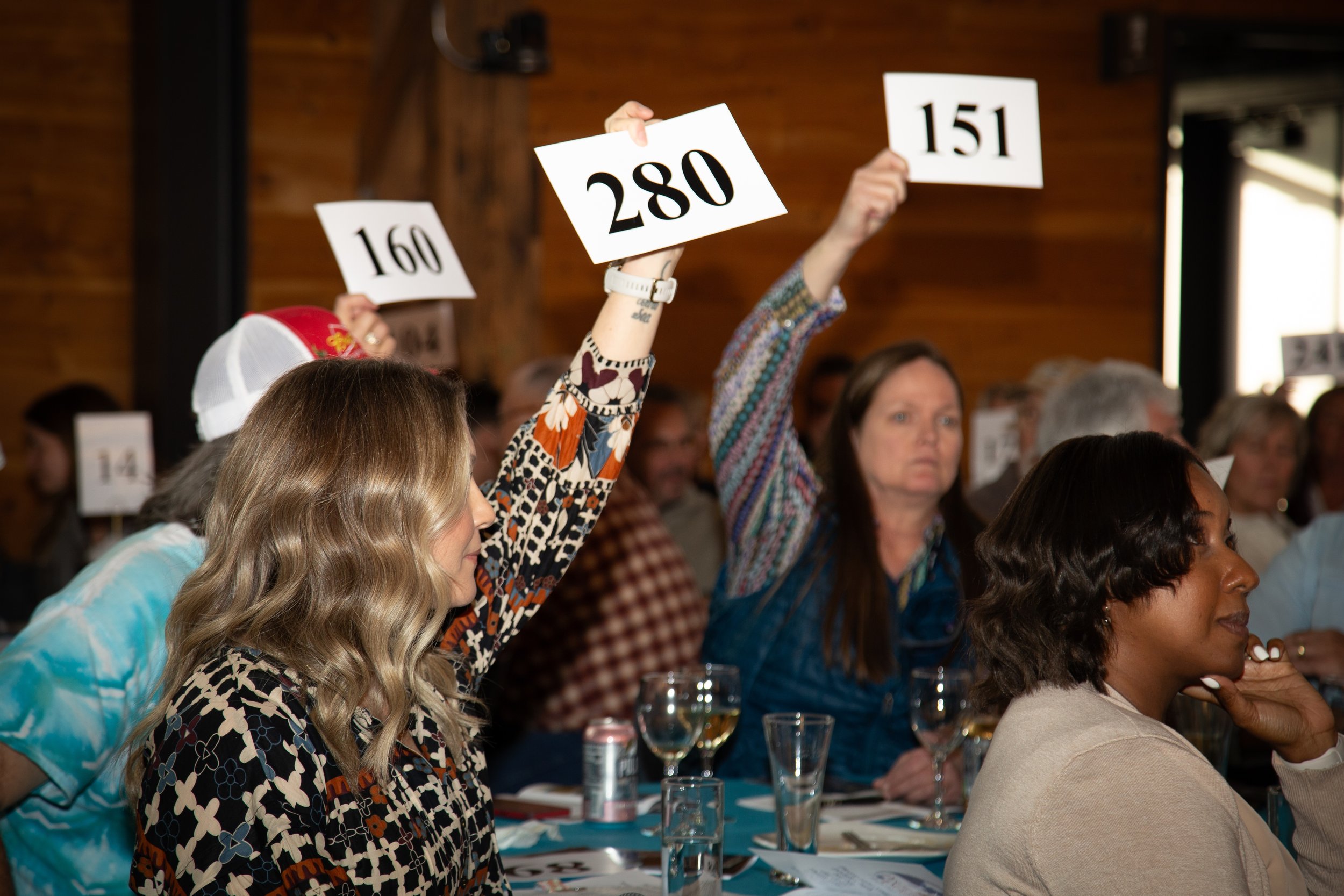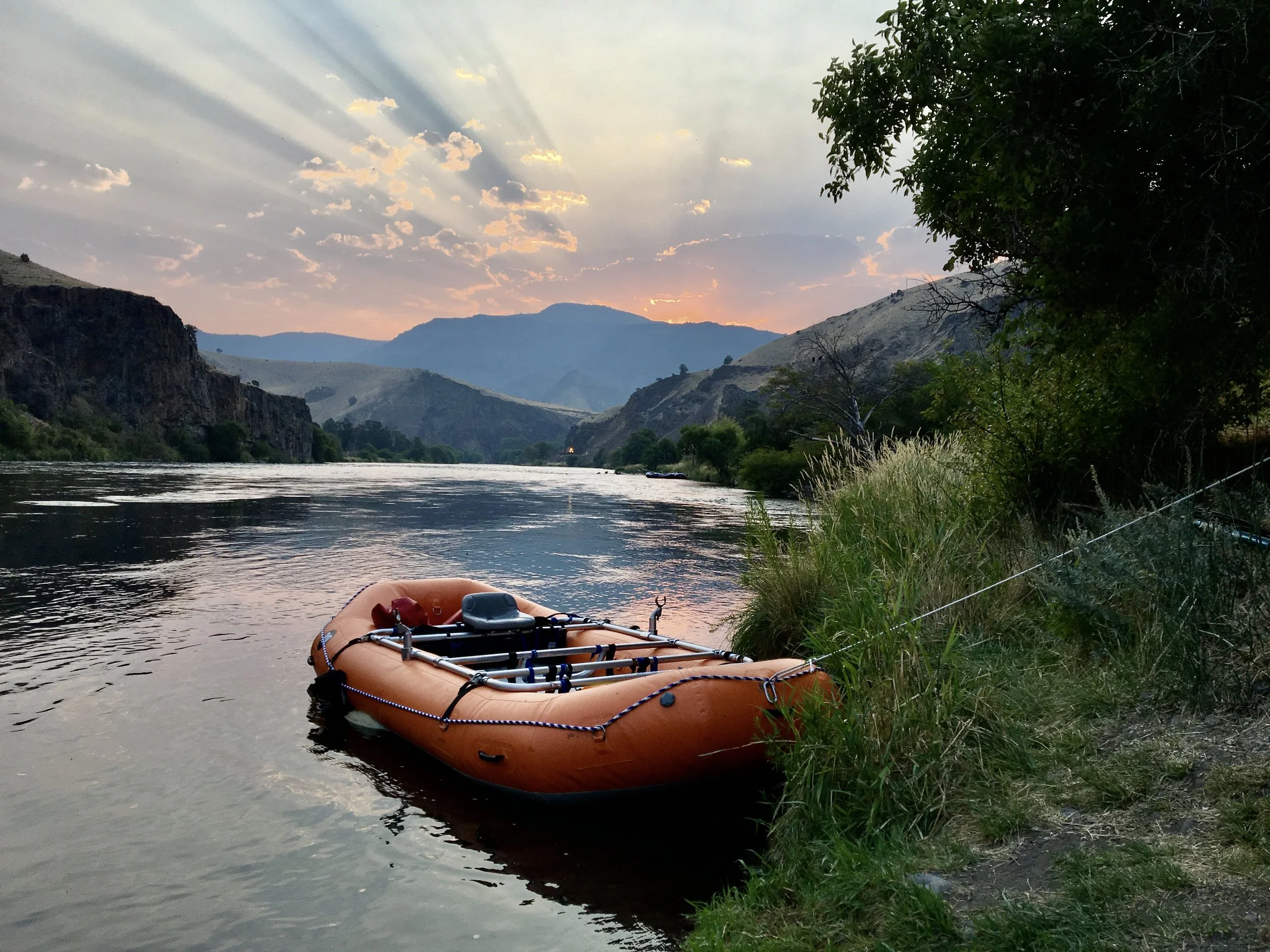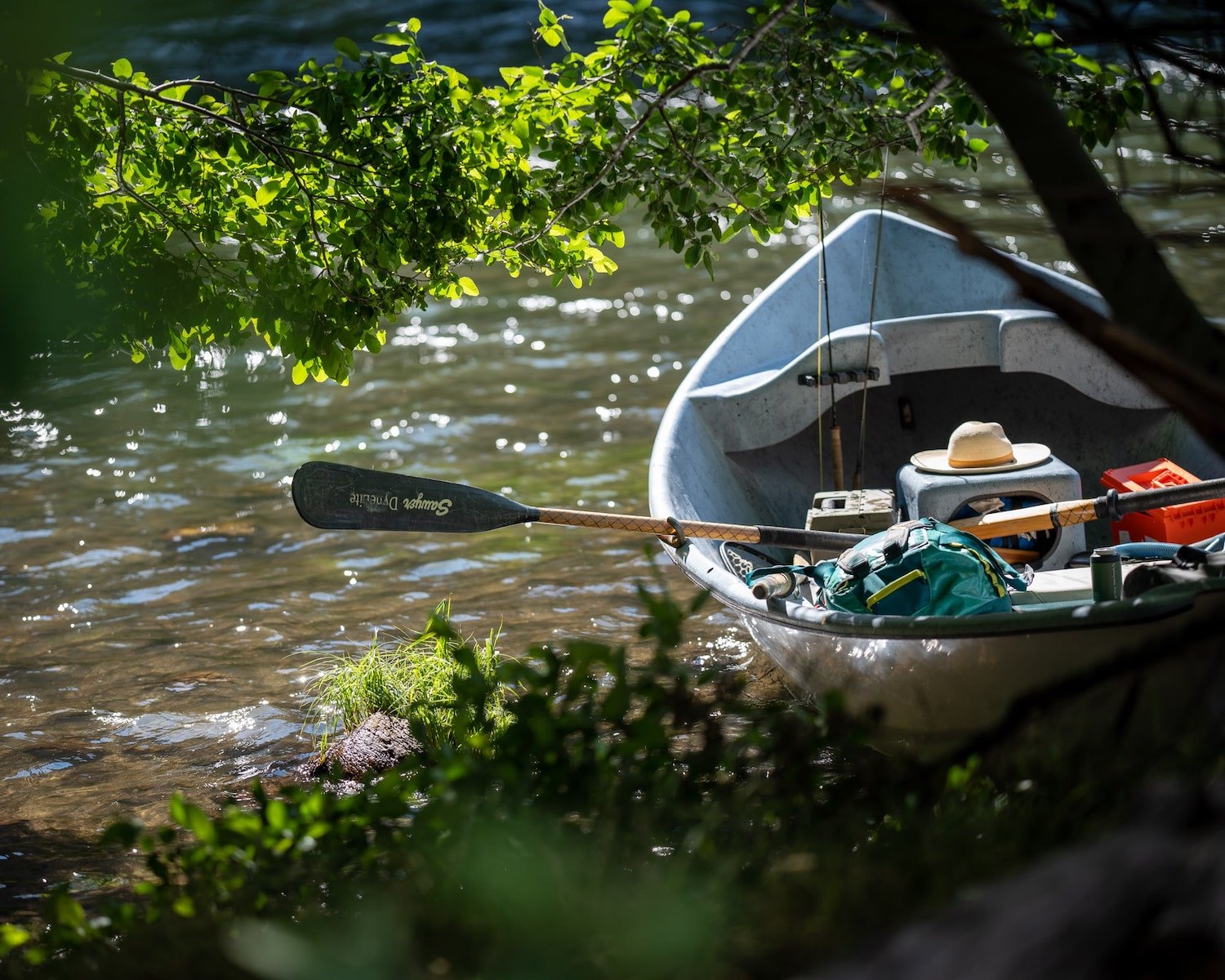Labor of Love: Deschutes Fly Shop and Camp
Fat fish, fat grins: clients of Deschutes Camp and Fly Shop delight in Deschutes River Bounty.
The “Long, Slow Pull” of Restoration
Vail Borne is a seasoned Deschutes River fishing guide and outfitter. But that’s just one of several hats he wears as the owner of Deschutes River Fly Shop and Camp. He’s a carpenter; over years, he’s refurbished, upgraded and improved a river-front property, the viability of which had eluded several previous owners. He’s a camp host, making anglers and vacationers of all stripes feel a touch of Deschutes river magic. He’s also manager of a fly-shop and a deli and store.
As motorists shuttle on Highway 26 from the Willamette Valley to myriad destinations in central Oregon, the rapid transition from the verdant green of the high Cascades to the dry, semi-arid high desert puts them into the Deschutes Canyon along the river for a few miles. Just as the road ascends the grade out of the canyon, an oasis on the east side of the highway is home to Deschutes River Fly Shop and Camp. Those who’ve travelled this route often over the years may remember previous incarnations of this property: a couple different fly shops, mom-and-pop convenience stores, intervals of shuttered windows, dilapidated buildings, and tall grass taking over campsites. Borne, who started his guide business in 2008, (River Borne Outfitters) took notice of the place, saw potential where few others did, and in 2015, bought it. “I was just dumb enough to try it again,” he jokes.
The TLC The River Deserves
Guests of Deschutes Fly Shop and Camp enjoy a summer evening serenade.
These days, Deschutes River Fly Shop and Camp looks like it will be around for a while. Borne, with a background in construction and development, over the years has remodeled two cozy, tidy cabins you can rent. 22 RV sites, 11 of them with full hook-ups, can also be had. There’s a full-service fly shop, and next door, you can get your coffee, beer, sandwiches and snacks. River shuttles can be arranged. More recently, the locale, with views of the river and burnt-umber hued folds of columnar basalt in the canyon, has attracted a few wedding parties and other group events. “It’s been a slow, steady pull,” says Borne. “It’s a unique operation. We’re pretty self-sufficient. The place has a lodge-style feel to it, even though we’re not too far from civilization.”
Borne fell in love with the Deschutes in 1991, when, as a wide-eyed teen, he lucked into trout fishing during the salmon-fly hatch. Over the ensuing years, he found himself drawn back to the Deschutes. “I wanted to be a guide, and the advice I got after asking around was “just get a boat and start fishing.” So he did. He started guiding in 1999.
Like so many others with years of experience on the Deschutes to draw from, Borne has seen some changes that cause concern. “It’s been years since I’ve seen a PMD hatch that just covered the river,” Borne says, listing other concerns all-too-familiar for those who know the river: black spot disease on trout. A general decline in caddis, mayfly and stone fly hatches. The proliferation of algae. A downturn, and in recent years, slight uptick in steelhead numbers. None of these problems seem insurmountable to Borne, who wonders why they haven’t been addressed already, in part because he’s witnessed what seems like a quick solution. “We’ve sure noticed that the fishing picks up when colder water is released,” says Borne.
“The river’s still good,” but it could be better,” Borne observes. “It seems like we still are able to catch those big trout up here but it seems like you used to have an equal chance to catch those 17-plus inchers all the way down to Maupin.”
The DRA’s water quality monitoring program confirms what Borne has observed: The frequency of water quality standard violations increase as warmer, nutrient rich water from the surface of Lake Billy Chinook flows downstream. “That’s why I’m a supporter of the DRA,” says Borne. “Without the data, we’d have nothing to contend that the river could be better.”
A Legacy of Care
Borne has re-virtalized a neglected stretch of river-front property with the TLC it deserves. He thinks the whole river deserves the same treatment. “Running a business like this, you see how the economy around the river, the guides, the shops, the hotels, the RV parks, all benefit from conservation,” he observes. “Guides do well when the habitat is healthy. And it’s an economy that’s sustainable forever if the habitat is taken care of.”
Borne wishes he had more time to engage in activism and conservation work on behalf of the Deschutes. In the meantime, wearing those many hats, he hopes the work he’s doing contributes to the cause. “We’re here to stay,” he says. “If I can make a the river better even in some small way that will be my legacy.”
More From The Blog
Subscribe the the DRA Newsletter
The Deschutes River Alliance is your focused voice to protect the lower Deschutes River, its cold water flows and the fish and wildlife that are sustained by them. We send regular emails with important data and news about the lower Deschutes River. We will not sell your contact information to others.
How to Support the DRA
Everyone wants clean, healthy water in the Deschutes River. Oregonians cherish our clean and healthy waterways to provide drinking water, wildlife habitat and recreational activities. The lower Deschutes River is a federally designated Wild & Scenic River, and a national treasure. It must be protected for the environmental and economic health of Central Oregon. By working together we can return the lower Deschutes River to full health.

